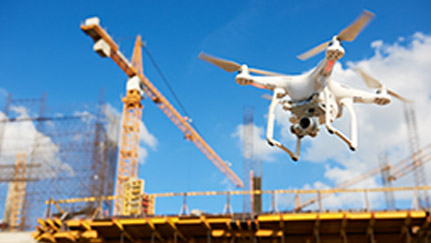If your business uses drones to save time and money, see what safety precautions may apply.
Subscribe to our newsletter for timely content in your inbox

In an industry where profit margins can be relatively small and the number of competitors high, it’s no surprise the use of drones in construction is growing. Historically, the construction industry has been considered a slow adopter of technology but drones are drastically changing the way contractors can improve their business operations and their bottom line. Contractors can’t afford to ignore the cost savings to capture and record data that previously required inefficient equipment mobilization or expenses associated with a hiring a third party to obtain the same information.
Drones are unmanned aircraft systems (UAS) that were first used in the military and controlled by an operator on the ground. While also used for recreational purposes, their use is growing in the commercial industry. Contractors are utilizing small drones, paired with video cameras, in all phases of projects such as:
Falls are the leading cause of fatalities in the construction industry,1 and the use of drones helps to avoid some situations where workers could fall from high elevations. Drones can sometimes replace the need for ladders and scaffolding. But they may also introduce new hazards if not properly managed. For instance, drone equipment failure may lead to a sudden crash, causing damage to vehicles and property in the fall zone or worse, bodily injuries to bystanders. The Federal Aviation Administration (FAA) has developed specific regulations (Title 14 CFR Part 107) for commercial use of small UAS including requirements that:
Learn more about the FAA drone regulations, safe use of drones, specific state legislation, and how to avoid costly fines for illegal flights: